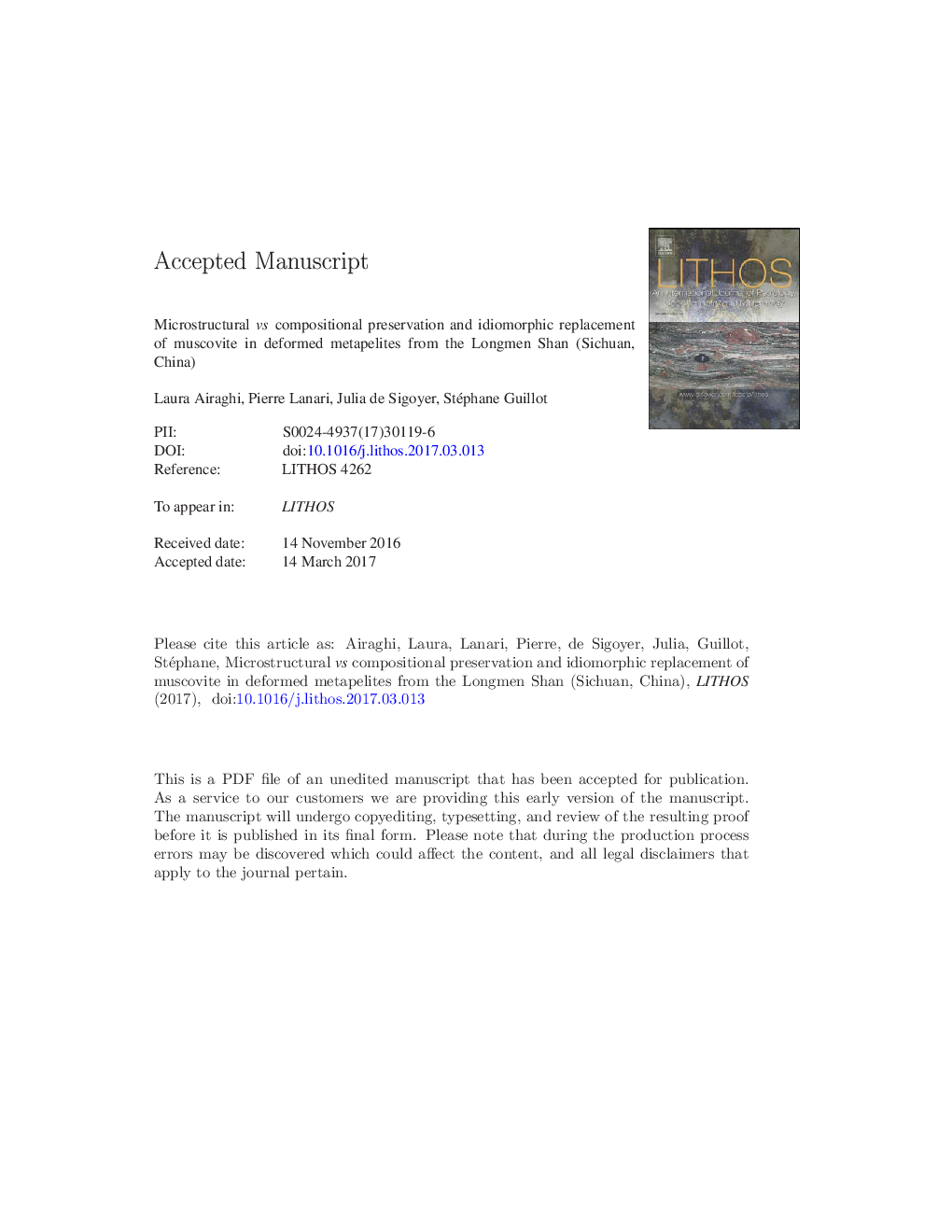| Article ID | Journal | Published Year | Pages | File Type |
|---|---|---|---|---|
| 5784133 | Lithos | 2017 | 66 Pages |
Abstract
Pressure-temperature-deformation (P-T-ε) paths for metamorphic rocks that experienced a complex deformation history commonly rely on the link between successive metamorphic assemblages and the different microstructures preserved at the sample scale. However, with changing P-T conditions, metamorphic minerals in a specific microstructure can chemically re-equilibrate. The direct link between deformation phases and mineral compositions for thermobarometry purposes can therefore be distorted. This study focuses on a series of garnet-biotite metapelites from the Longmen Shan (Sichuan, China) that preserve muscovite of different chemistry in distinct microstructures. To quantify the degree of re-equilibration of muscovite, a microstructural study was coupled with high-resolution chemical mapping. The chemical evolution of muscovite was modeled along a P-T loop previously constrained with phase equilibria calculations, semi-empirical and empirical thermobarometry. Results show that metapelites experienced a three-stage metamorphic history: (1) heating and burial up to 11 ± 2 kbar, 530 ± 20 °C, (2) minor decompression and heating up to 6.5 ± 1 kbar, 575 ± 10 °C and (3) decompression and cooling down to 4 ± 1 kbar, 380-450 °C. Muscovite partially re-equilibrated by pseudomorphic replacement during the three metamorphic stages, although it is mainly observed in prograde microstructures preceding the pressure peak. The main factors controlling the re-equilibration are the intensity of the deformation and the fluid availability during metamorphism. The P-T conditions of metamorphic assemblages thus reflect pulses of fluids release that enhanced mineral resorption and local replacement. Such micro-chemical behavior is probably relatively common in metapelites and questions the reliability of the P-T predictions based on relict phase chemistry, apparently preserved in microstructures that might have been affected by later re-equilibration.
Keywords
Related Topics
Physical Sciences and Engineering
Earth and Planetary Sciences
Geochemistry and Petrology
Authors
Laura Airaghi, Pierre Lanari, Julia de Sigoyer, Stéphane Guillot,
